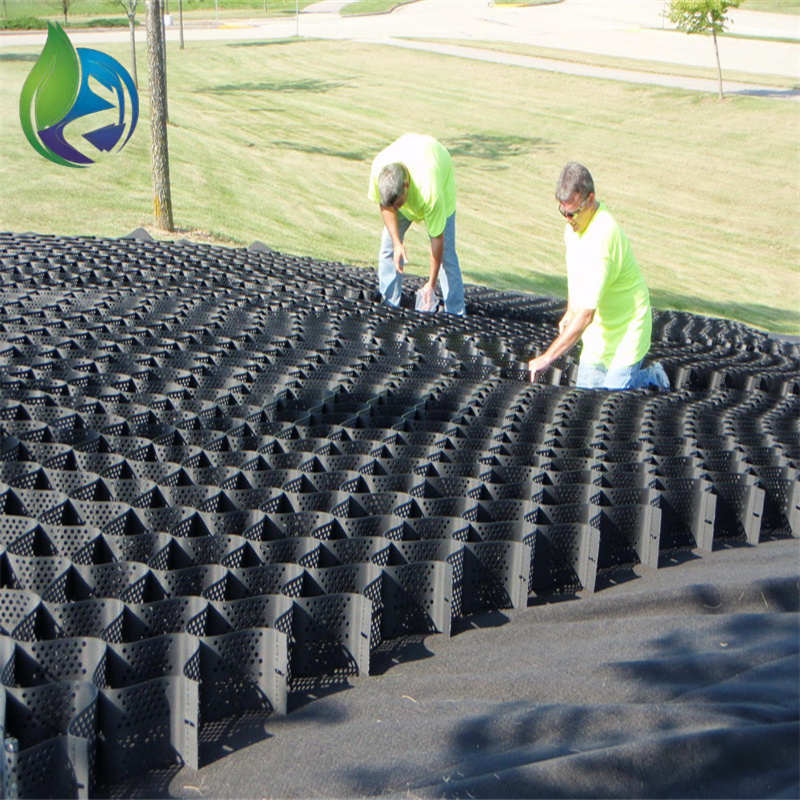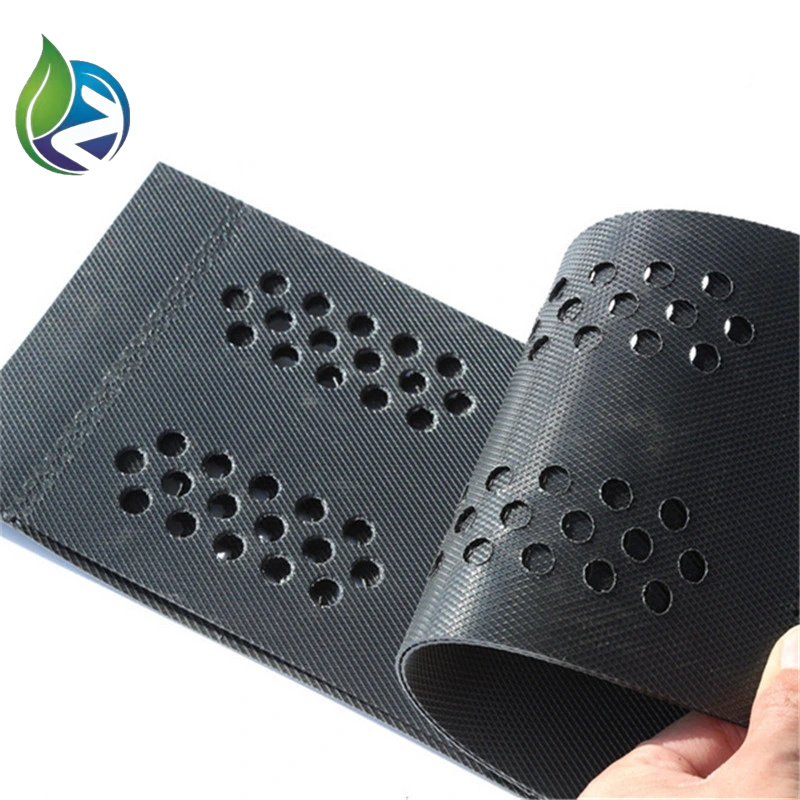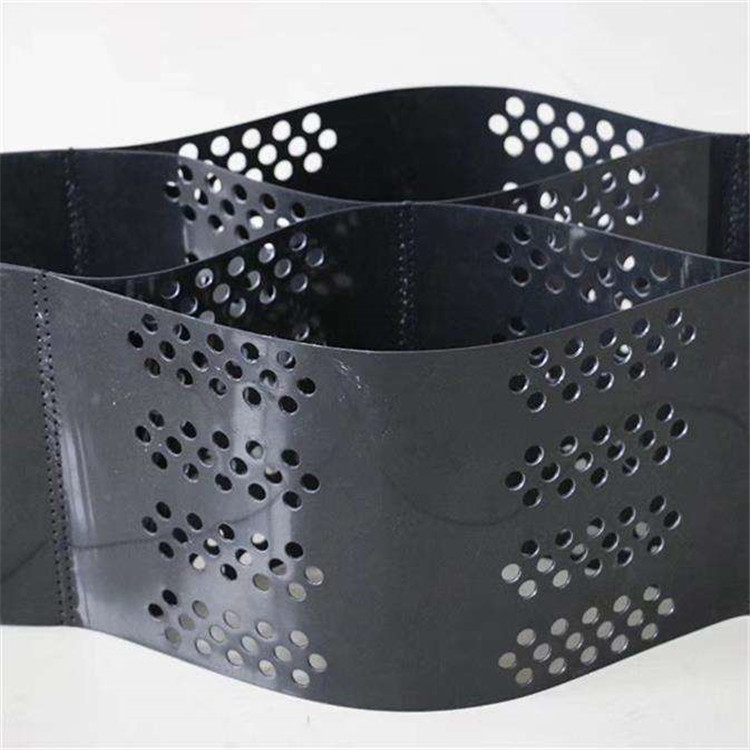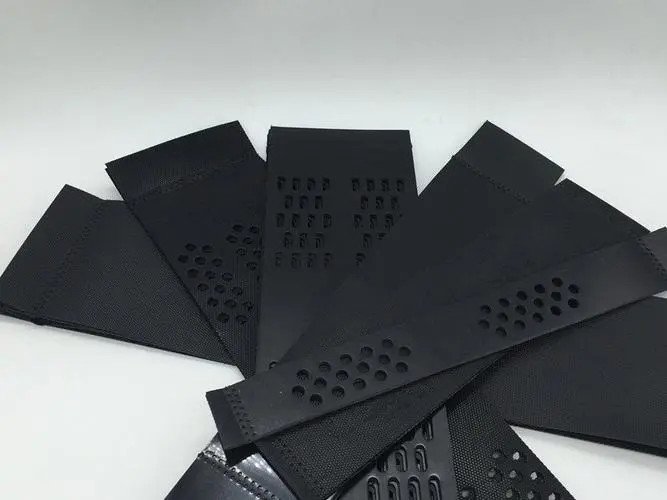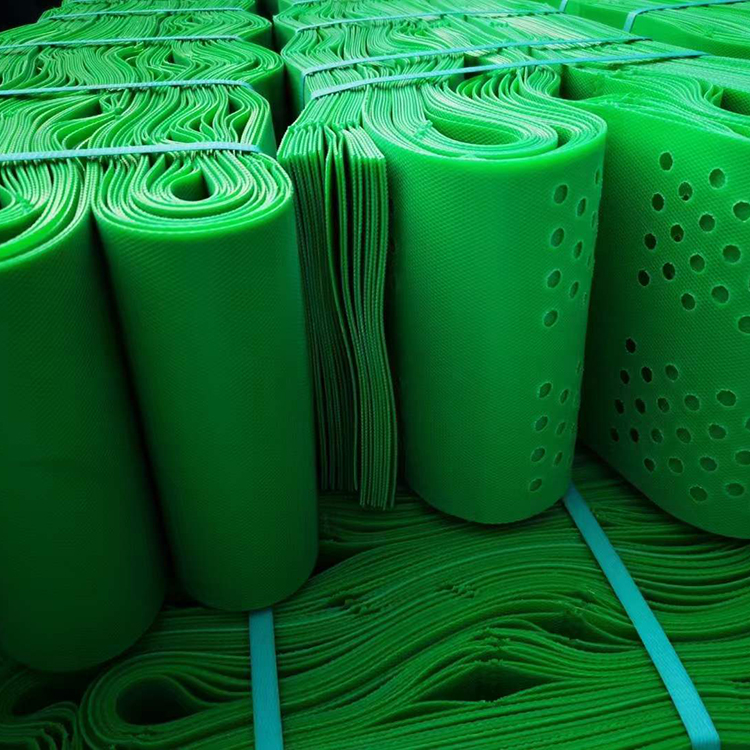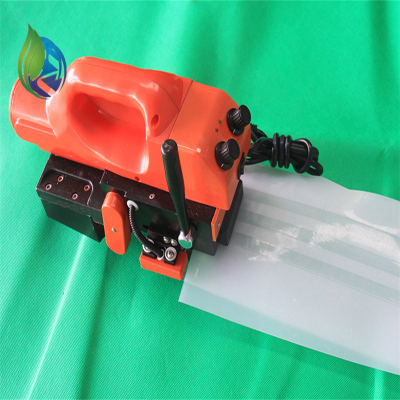Geocell for Slope Protection
As a kind of high performance geosynthetic material, geoglyph has been widely used in many fields such as civil engineering, environmental protection and landscape design. It is made of high strength HDPE plastic sheet material by welding, ultrasonic needle welding or heating welding process to form a three-dimensional network cell structure. This structure is not only flexible, easy to transport and construction, but also has a number of advantages, making it ideal for solving complex geological and engineering problems.
Support bulk ordering with favorable prices.
Support ODM/OEM.
The factory has stock and fast delivery.
Delivery Time: 10-20 working days
Minimum Order Quantity: 300 square meters
Payment Term: 30% T/T Deposit, 70% T/T Before Shipping
HDPE Geocell for Construction Civil Engineering Reinforced Soil Parking Trails & Pathways
The HDPE Geocell for construction civil engineering reinforced soil parking trails & pathways is an advanced geosynthetic product designed to enhance ground stability, load distribution, and erosion control. Its cellular confinement structure makes it a reliable solution in infrastructure development, especially in areas with weak or unstable soil.
What is HDPE Geocell?
The HDPE Geocell for construction civil engineering reinforced soil parking trails & pathways is a three-dimensional, honeycomb-like structure made from high-density polyethylene strips that are ultrasonically welded together. When expanded and filled with granular materials such as soil, gravel, or sand, the geocell forms a strong composite structure capable of bearing heavy loads and resisting lateral movement.
Applications of HDPE Geocell for Construction Civil Engineering Reinforced Soil Parking Trails & Pathways
The versatility of the HDPE Geocell for construction civil engineering reinforced soil parking trails & pathways allows it to be used in a wide range of projects:
Soil Reinforcement: It improves the bearing capacity of soft or loose soils in embankments and retaining walls.
Parking Lots: Provides a stable, permeable surface that prevents rutting and uneven settlement in vehicle parking zones.
Trails & Pathways: Ideal for pedestrian paths and bike trails, especially in parks and eco-sensitive areas, offering both durability and natural drainage.
Road Base Stabilization: Enhances load distribution for paved and unpaved roads, extending their lifespan and performance.
Erosion Control: On slopes and embankments, the geocell confines soil to prevent erosion from water runoff and wind.
Key Benefits
The HDPE Geocell for construction civil engineering reinforced soil parking trails & pathways offers several technical and economic advantages:
High Strength & Durability: With excellent tensile strength and resistance to chemical, UV, and environmental degradation, HDPE geocells perform reliably even in harsh conditions.
Load Distribution: The cellular structure distributes applied loads across a wider area, reducing pressure on subgrades.
Easy Installation: Lightweight and compact before expansion, geocells are easy to transport and install, saving time and labor costs.
Eco-Friendly: By reducing the need for imported fill material and enhancing natural drainage, the HDPE Geocell for construction civil engineering reinforced soil parking trails & pathways promotes sustainable construction.
Low Maintenance: Once installed, the system requires minimal upkeep, making it a long-term solution.
Technical Specifications
Material: High-Density Polyethylene (HDPE)
Cell Height: Typically ranges from 50mm to 200mm
Welding Distance: Varies based on load requirements (typically 330mm–660mm)
Surface Options: Smooth or textured
Perforation: For improved drainage and root interaction
Conclusion
The HDPE Geocell for construction civil engineering reinforced soil parking trails & pathways is a modern, cost-effective solution that enhances the performance and longevity of civil infrastructure projects. Whether reinforcing subgrade for a parking area or stabilizing a trail in a park, HDPE geocells provide long-term reliability, environmental harmony, and structural integrity.
Advantages:
Lightweight and high strength:
Geocells are made of lightweight materials that are easy to transport and construct, but their high strength characteristics enable them to form structures with strong lateral limitations and high stiffness when filled with earth, gravel or concrete.
Wear resistance and corrosion resistance:
The material has excellent chemical stability, light oxygen aging resistance, acid and alkali resistance, and can maintain long-term stability in harsh environments such as different soils and deserts.
Good drainage performance:
Its three-dimensional structure can effectively improve soil drainage conditions, prevent water accumulation, and improve the overall stability.
Convenient construction:
The geocell can be rapidly expanded and filled with materials during construction, which greatly shortens the construction period and reduces the cost.
Enhanced foundation bearing capacity:
By spreading the upper load and effectively transferring it to a wider foundation layer, geocell can significantly improve the bearing capacity and stability of the foundation and reduce foundation settlement.
Increase the effective thickness of fill:
the three-dimensional structure of geocell can increase the effective thickness of fill in a limited space, reduce the amount of fill and cost.
Improve embankment stability:
Provide better embankment stability and slope protection under complex terrain conditions.
Promote ecological restoration:
In ecological restoration projects, geoglory contributes to vegetation growth and soil and water conservation, which is conducive to ecological environment restoration.


